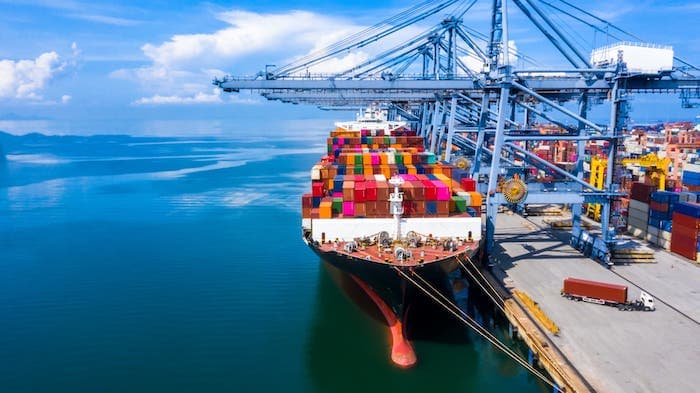The tactical fight against
Counterfeiting
Counterfeiting

In earlier times pirates attacked ships or attacked coastal towns from the sea. Today pirates reach for your products – not to own them, but to copy them. Product piracy is the keyword. The business with so-called copycat goods is referred to as product piracy, counterfeiting or brand piracy.
In doing so, trademark rights or competition law regulations are violated; often also copyrights, designs and patents. Because the copied goods are manufactured with the aim of being confusingly similar to original goods.
Counterfeiting occurs in almost all areas: software, watches, clothing, medicines, auto parts and even entire motor vehicles. We basically differentiate between four types of copies:
- Product plagiarism has a slightly changed brand name. Often they hide products that are not even produced by the original manufacturer.
- Slavic forgeries try to copy the original exactly. The packaging and brand name are often identical to the original.
- Classic counterfeits use identical packaging and the name of the original producer. The content often deviates and is of inferior quality.
- Pirate copy is the common name for illegally produced and / or distributed copies of copyrighted material. As a rule, products in the media industry are affected
Anti-Counterfeiting – Complex measures against counterfeiters
In the fight against product and brand piracy, the complexity of the measures is of great importance. Highly complex campaigns like those we offer our customers are still rare. At the moment, routine actions predominate; about seizures. But counterfeiters can react quickly and routinely to these measures – simply by moving to a new hiding place.
And whoever believes that the root of the problem can only be found in the countries of origin of the counterfeit products – and that the problem can be solved by closing the manufacturing factory in China – is unfortunately wrong.
The origin of the problem is to be found much more where the client is located – often in Western Europe. These clients have contract manufacturing in China and then sell the goods in Eastern Europe or elsewhere. In some cases, in our experience, taking action against sales can be very effective.
For example, if the identity of the client is still unknown or not all of the information required for an effective procedure is available. Concentrated actions (confiscations, customs investigations) in the sales structure and the subsequent civil and criminal proceedings can make sales so economically unattractive that ideally the clients are forced to give up.
However, the full impact of anti-counterfiting only arises in the combination of the following 5 areas of action: Property rights, monitoring, civil law measures, criminal law measures, customs-related seizure.
Property rights
The early registration of national and international property rights is next to copyright and competition law almost the only way to acquire a legal claim to intellectual property. Exception: If, for example, there is a “slavish imitation”, companies can also win lawsuits without a previous patent application; only with the help of competition law.
The relevant property rights are trademarks (… is used to identify goods or services), patent (… protects the technical properties of a product or process), utility model (… the utility model, which is often referred to as a “small patent”, is also a real invention protection right), Registered design (… protection of design / appearance of a product) as well as semiconductor and plant variety protection.
Monitoring
To effectively combat product piracy, you need a comprehensive tracking and market monitoring system. We have a specially developed and unique system for operational investigation and analysis; with its own undercover investigators, specialized staff and test buyers who mainly focus on tracking down people and pirated goods.
In addition, we comb through all areas of the Internet with specially developed search algorithms and screening processes. The results are processed by our employees and made available to our customers for further use. This enables us to identify and track down pirated goods, localize sources of counterfeiters and trace sales channels.
Civil law measures
Extrajudicial and judicial measures can take effect: With a warning, the infringer is requested out of court to submit a declaration of cease and desist. In addition, he is obliged to provide information about the turnover and profit achieved and to acknowledge the liability for damages.
With a judicial injunction, these claims can be provisionally enforced, with a judicial action – or the submission of a final declaration on the injunction – finally. In addition, there is the possibility of provisional securing of the infringer’s assets and real estate by means of an attachment in rem. In addition, the pirated goods can be taken into custody by the bailiff as part of the execution of the temporary injunction.
Or an attempt is made to obtain a seizure by law enforcement agencies. Compliance with court decisions can be enforced by means of administrative and coercive measures: a fine can be imposed and, in the event that it cannot be recovered, substitute detention or direct detention can be ordered.
The maximum amount is 250,000.00 euros, in practice sums of 10,000.00 euros or more are common, which increase drastically if the compliance is continued. The maximum length of custody is 6 months. Likewise, the title to information can also be enforced by imposing coercive measures.
Both fine and imprisonment can, after enforcement of a previously established means of coercion, be ordered in any order one after the other and both can also be ordered repeatedly.
Criminal law measures
Above all, criminal law measures have a deterrent effect. Product piracy affects a large number of criminal offenses. While some criminal offenses, such as Sections 196 UrhG, 51 GeschmMG, 142 PatG, 25 GebrMG, 143-144 MarkenG, cover both production and distribution, other criminal provisions sanction actions that arise in the run-up to imitation.
This concerns the spying on company and trade secrets, the betrayal of secrets or the piracy of the template. Product pirates usually try to destroy any evidence in order to evade criminal prosecution. As a rule, pirated goods are important for the criminal investigation, as their inspection can generally provide evidence of the infringement of the license plate.
Border Control and Seizure
A particularly effective instrument is the seizure of pirated goods at the border or by mobile customs control groups within the EU. The border seizure procedure is initiated by us as a representative in accordance with Art. 5 Piracy Regulation. According to Art. 9 Para. 1 Piracy Regulation, the customs office suspends the release of goods or withholds them and informs us.
You can then examine the goods. This is followed by legal proceedings or a simplified destruction procedure in accordance with Art. 11 Piracy Regulation. If a company discovers imitations of its products at a trade fair or event, there is also the option of having the goods removed from the trade fair or sales stand by the customs authorities. For this purpose, we work with the customs authorities to organize trade fairs and events.
Effective and efficient: The summary works best
Civil, criminal and customs measures can be applied. These interlock and should be used in combination. In this way, both the strong deterrent effect and the police investigation possibilities in criminal proceedings, as well as the advantages of a quick end to piracy and claims for damages in civil law proceedings come to fruition.
We make sure that the measures are coordinated with one another in terms of time. The delivery of an injunction can be coordinated with a police search and the seizure can be used to secure profits from product piracy to satisfy claims for damages. In addition to the right timing, the basic building block of a successful anti-counterfiting strategy is coordinated cooperation with the customs authorities and ongoing monitoring of the market.
With effect and profitability to success
The effectiveness and cost-benefit calculation must be right for all measures: costs can already be reduced when registering property rights. We advise, for example, to make use of the inexpensive option of the EU community trademark / design.
The establishment of the border seizure at the customs authorities and the filing of a criminal complaint are initially free of charge with the investigative authorities. In the case of civil law measures, a reimbursement for the costs incurred in legal prosecution can generally be requested from the other party; the unsuccessful party must reimburse legal fees in the amount specified by law.
Ideally, an effective and efficient anti-counterfeiting model not only avoids costs, but also generates additional income through compensation processes.
Z I E R H U T * I P
Experts for Global Brand Protection
With unparalleled experience we defend the valueable brands of our clients on all marketplaces worldwide using a combination of our very efficient algorithms that identify IP infringements, an unique brand protection strategy, our close collaboration with customs, investigating authorities and the state task forces and our network of local agents.

